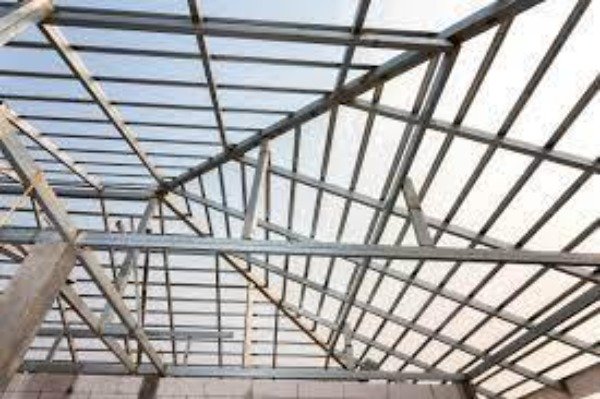In the world of steel structures and roofing systems, purlins play a vital role in providing strength and support. They act as horizontal beams that are laid between the roof’s main rafters to support the roof sheets and transfer loads. Choosing the right Purlin Types is essential for ensuring the structural integrity and longevity of any metal building, especially in pre-engineered buildings (PEBs).
This article will guide you through the different purlin types, their characteristics, and how to choose the right one based on your project’s requirements.
What Are Purlins?
Before diving into the various purlin types, it’s important to understand what a purlin actually is. A purlin is a horizontal structural member in a roof, typically used in metal building systems. It supports the roof deck or sheeting and transfers the load to the primary structural framing elements, such as rafters or building frames.
Purlins are commonly made from cold-formed steel sections due to their high strength-to-weight ratio and cost-effectiveness. They can also be made of timber or aluminum in some cases, but steel is the most widely used material in modern construction.
Common Purlin Types
Several purlin types are used depending on the design and purpose of the building. The most common types include:
1. C Purlins
C purlins are named for their distinctive C-shaped cross-section. They are typically used in walls and roof structures where lightweight support is required.
Advantages:
- Lightweight and easy to install
- Ideal for medium-span lengths
- Common in both roofing and wall framing
C purlins are often used in smaller buildings, garages, and light commercial structures.
2. Z Purlins
Z purlins have a Z-shaped profile, which allows them to overlap at joints. This overlapping capability makes Z purlins suitable for larger spans and more demanding load conditions.
Advantages:
- High structural efficiency
- Overlapping helps in continuous spans
- Perfect for long-span roofing systems
Among all purlin types, Z purlins are the preferred choice in large industrial and commercial steel structures due to their superior load-bearing capacity.
3. Sigma Purlins
Sigma purlins are less common but offer high strength and load resistance. They have a profile that resembles the Greek letter “Σ” and are mostly used in specialized applications.
Advantages:
- Enhanced strength compared to C or Z sections
- Ideal for heavy loads and long spans
- Often used in multi-story steel structures
Though not used as frequently, Sigma purlins can be a reliable choice in specific designs where extra strength is needed.
4. Box Purlins
Box purlins are made by connecting two C sections back to back, forming a rectangular or square box section. This shape increases torsional resistance and structural stiffness.
Advantages:
- Extremely rigid and strong
- Best for areas subject to high wind loads
- Provides stability in complex structures
Among the lesser-used purlin types, box purlins are ideal when higher loads and added rigidity are required.
Factors to Consider When Choosing Purlin Types
Selecting the right purlin types depends on several structural and environmental factors:
- Span length: Z purlins are ideal for longer spans, while C purlins work well in shorter spans.
- Load requirements: Heavy-duty structures benefit from Sigma or box purlins.
- Roof slope and design: Certain purlin types work better depending on the angle of the roof.
- Ease of installation: Simpler shapes like C purlins may be easier and faster to install.
- Budget: Some purlins are more cost-effective than others, depending on material and manufacturing complexity.
Each of these purlin types has a unique structural profile that makes it suitable for specific building applications. Understanding the demands of your structure will help you make the most cost-effective and safe choice.
Applications of Different Purlin Types
- Industrial buildings: Z and Sigma purlins are common due to high load requirements.
- Warehouses: Z purlins support wide roofing areas efficiently.
- Garages and sheds: C purlins are lightweight and easy to install.
- High-rise structures: Sigma and box purlins provide additional strength and stability.
Conclusion
Choosing the correct purlin types is critical to the strength, efficiency, and longevity of a steel building. Whether it’s a light-duty shed or a large industrial facility, understanding the differences between C, Z, Sigma, and box purlins will help you make a more informed decision. Each of these purlin types serves a unique structural role, and selecting the appropriate one ensures your building performs well under various loads and environmental conditions.
Always consult with structural engineers or building professionals when deciding on purlin types to ensure safety, code compliance, and long-term performance. Properly chosen and installed purlins can make a significant difference in the cost and durability of your construction project.





